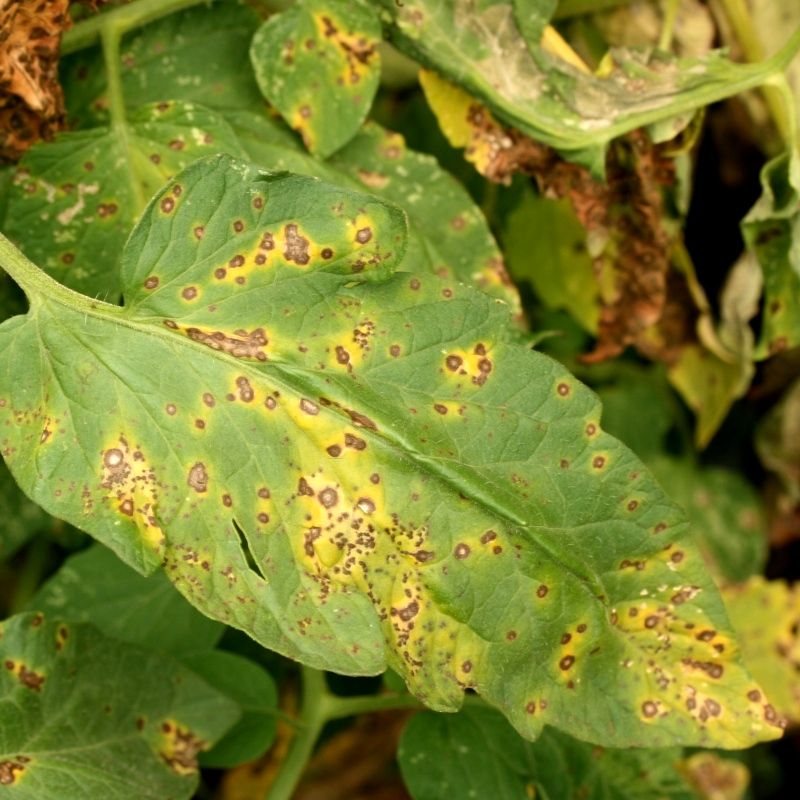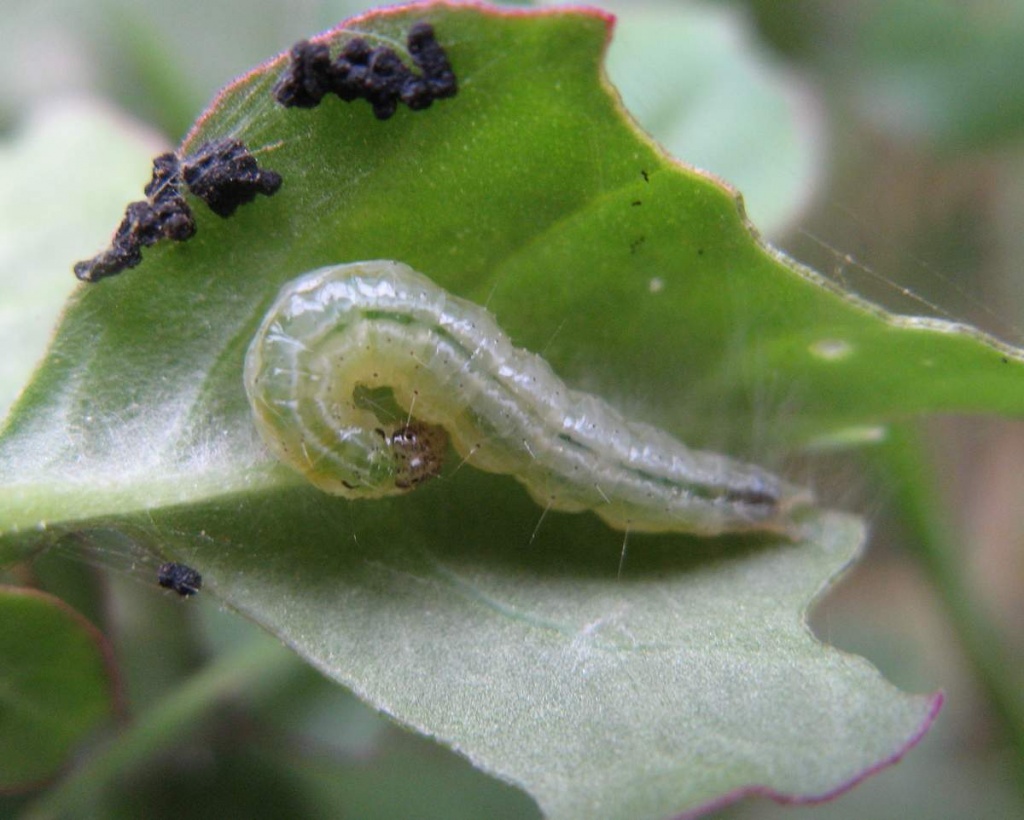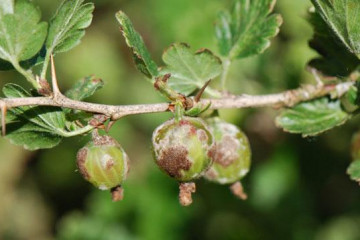Diseases of asters
Content:
Aster lovers rarely turn to domestic planting material. Preference is given to foreign seeds and seedlings. This led to the spread of disease-causing organisms capable of destroying the flower. Today there are approximately 24 known viruses that infect the plant. The sick aster begins to fade. Its leaves become narrow, the inflorescences are deformed, growth slows down. In addition to viral and bacterial infections, numerous pests also have a detrimental effect on the flower.
Brief characteristics of the plant
Since ancient times, aster has been considered a symbol of beauty, modesty, and elegance. Today, almost no one is interested in the origin of this beauty, but everyone admires her amazing appearance.
Thanks to the work of breeders, such a variety of aster varieties have been created that even experienced gardeners begin to get confused in them. This ornamental plant has many shapes and colors. On personal plots, you can find yellow, white, red, blue, pink, purple specimens.
Aster is a stunted flower. She is decorated with terraces, planted along the garden paths, on the balcony. In care and cultivation, the plant is not whimsical, but it is prone to being affected by various diseases.
Symptoms of flower diseases
It is important to recognize the symptoms of a particular plant disease in advance. This will allow timely taking appropriate measures to rescue him. In no case should the problem be left to chance - the plant will die, and all the work on growing it will be in vain.
Yellowing of leaves
If the leaves of the aster turn yellow, this suggests that the flower may have the following problems:
- rust;
- fusarium wilting;
- jaundice.
Twisting
Why do aster leaves curl? In 90% of cases, this phenomenon is a vivid confirmation that the plant has been affected by Fusarium.
Spotting
The appearance of spotting on the leaves indicates the following problems:
- infection with septicemia;
- the development of fusarium;
- defeat of bacterial infections.
Sepriosis is a disease that is popularly called brown spot.
Others
The plant dries on the root - this is evidence that the flower has undergone a fungal disease.
The tops of the leaves curl - the cause may be aphids or the presence of a large amount of nitrogen in the soil. Leaf curl can also be observed with insufficient watering.
Asters - we fight dangerous diseases
Any infection would not hit the flower, it will lead to the loss of its beauty and even to the death of the plant. Therefore, it is important to know the main diseases of aster and their treatment.
Jaundice of asters
Flowers are infected by a virus carried by cicadas and aphids.
Aster leaves in the vein area acquire a light shade and turn white over time. Plants stop growing, bud development stops.
Ways to fight:
- the main measures for the protection of asters should be directed against the carriers of the virus;
- all plants affected by the disease must be burned;
- asters must be treated with means that will not allow the attraction of aphids and cicadas to the flower.
Blackleg
The causative agent, which is a fungus, affects plant seedlings:
- seedlings turn black;
- rot begins to appear at the root and at the base of the neck;
- the stems of the seedlings become thin and die.
Ways to fight:
- the soil must be disinfected with a 0.5-1% solution of potassium permanganate (100 ml of solution per 10 liters of water);
- it is necessary to dive seedlings at an early stage of growth;
- it is impossible to use seeds of diseased plants as planting material;
- containers for planting are treated with a solution of copper sulfate (100 grams per 10 liters of water).
Rust of asters
This ailment for all types of flowers is considered quite dangerous, as it can lead to the death of all seedlings on the site. On asters, rust appears in the form of growths and brown spots that affect the leaves of plants. The spores that cause the disease tolerate wintering well, spread over long distances with the wind. This leads to massive infestation of different types of flowers.
Ways to fight:
- plants should be planted away from coniferous trees (distance - at least 300 meters);
- the flowers are sprayed weekly with a 1% solution of Bordeaux liquid.
If asters are affected by this ailment, all infected plants must be destroyed. This will save other flowers.
Bacterial spot
On the underside of the leaves affected by bacteria, oily spots of brown color begin to form. They can also be seen on the stems and buds of the plant. Over time, these spots begin to appear on the upper side of the leaves. As a result, the disease covers all the leaves of the flower.
The disease begins to develop during the budding period. Subsequently, it infects aster inflorescences and seeds. The bacteria tolerate wintering well; in the cold season, they settle on plant residues in the ground.
Ways to fight:
- spraying the bushes with a 1% solution of Bordeaux liquid - weekly;
- processing of flowers with 0.5% composition of copper oxychloride - every 10 days.
Fusarium wilting
Fusarium is one of the most harmful diseases of asters. Its causative agent is the Fusarium mushroom, which looks like a spore with thick walls. He is able to stay in the ground for a long time, through which the bushes are infected. Spores of this pathogen enter the flower through its roots and begin to actively spread through the conducting system, leading to its clogging.
Signs of the disease:
- leaves change color - from yellowing to brown;
- brown spots of an elongated shape appear on the stems;
- the flower takes on a gloomy appearance, its development stops;
- leaves curl and wither;
- at the base of the stem, the mycelium develops, pinkish blooms appear.
If dark stripes appear on one side of the plant stem (unilateral lesion), and the leaves begin to wither, this is the main sign that aster fusarium is taking place: how to deal with this disease?
Ways to fight:
- compliance with crop rotation;
- destruction of infected bushes, followed by processing the soil with quicklime;
- the return of the culture for sowing to its original place no earlier than after 5 years;
- lowering the acidity of the soil by liming it;
- disinfection of seeds before planting with special solutions.
A favorable temperature regime for the intensive spread of the pathogen is from 12 ° C degrees Celsius, and for its reproduction - + 20-27 ° C.
Gray rot
Leaves, inflorescences and stems of asters are affected by this ailment. This disease is especially insidious for young bushes that have not yet matured. Places affected by the disease acquire a brown tint and begin to rot. In the area of infection, over time, a gray bloom with a fluff appears.
The only way to resist this disease is to destroy diseased plant shoots.
The main pests, methods of dealing with them
Various pests like to settle on asters. They destroy the leaves, buds, stems of the plant. This spoils the decorative appearance of the flower and often leads to its death.
Spider mite
This pest spoils aster leaves. They first change their color, then fade and fall off.
To overcome the spider mite, the bushes are treated with soapy water.
Common earwig
The most dangerous pest of the aster is the common earwig. It infects plant leaves, kills inflorescences and buds.
To get rid of it, the bushes need to be sprayed with Fundazole.
Aster blizzard
The bushes are harmed not so much by the butterfly itself as by its caterpillars. They eat young aster inflorescences, seeds and petals.
To save the plant from caterpillars, the bushes need to be constantly inspected and the larvae must be manually collected. To prevent the appearance of an aster blizzard, the soil is treated with Bazudin.
Aphid kidney
These insects infect the leaves of young flowers, which begin to curl and fall off.
To resist the defeat of kidney aphids, the bushes are sprayed with Karbofos.
Plowed slug
It damages foliage and flower buds. To get rid of it, the bushes must be constantly examined. If slugs are found, they are collected by hand and burned off site.
To prevent the plowed slug from causing trouble, you need to remove all weeds in a timely manner, keep the area clean, and cultivate the land with superphosphate.
Slobbering penny
The pest appears in late spring and affects young plants. In the axils of aster leaves, it leaves secretions in the form of foam. Pest larvae live there. The leaves of a flower affected by a slobbery penny acquire small yellow spots, and its flowering deteriorates markedly.
Aphid helihrix
Aphids attack the buds and foliage of annual asters. This leads to their wilting and dropping.
To get rid of the attack of aphids, the bushes are sprayed with systemic insecticides.
Disease prevention and proper care
Diseases of asters contribute to the death of the plant. To prevent this from happening, the following preventive measures are taken:
- healthy planting material and seeds are used for plant breeding;
- growing varieties that are able to resist viruses;
- provide flowers with proper care;
- constantly identify and destroy insects that are a threat to the plant;
- discard and destroy bushes that have symptoms of a viral infection;
- weed control.
How to properly care for asters is briefly written below:
- For the favorable growth of asters, the air temperature should not fall below 18-20 ° C degrees Celsius.
- Asters love lighted, sunny places. Flowers will not grow in the shade and will die.
- Asters are watered as the soil dries up. Waterlogging of the soil must not be allowed. Otherwise, the root system of the plant will start to rot.
- Asters do not need additional spraying. They receive all the moisture for growth and development from watering. Plants are sprayed only with special solutions and mixtures when they treat a flower from damage by diseases and pests.
- The optimum air humidity for the favorable growth of asters should be at least 60% and not more than 70%. Dry air has a detrimental effect on the decorative appearance of the plant.
- The soil in which flowers grow needs regular oxygen supply. How to make the soil saturated with it? This is done by conventional loosening, avoiding damage to the plant roots.
- Asters love fertilizing in the form of mineral fertilizers. Nitrogenous ones should not be used, since they reduce the number of inflorescences, while increasing the formation of deciduous mass.
Asters can die from viruses or pests. To prevent this, you need to regularly inspect the plants. If even the slightest symptoms of disease or damage are found, urgent measures must be taken to save the flowers.





















